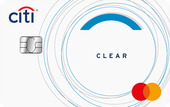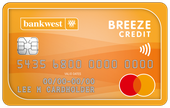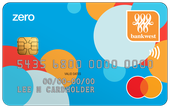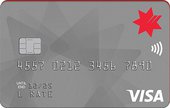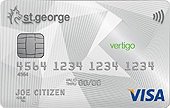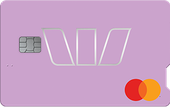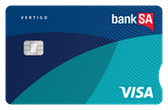What is a low interest rate credit card?
Low interest rate credit cards typically come with a lower interest rate on purchases, balance transfers, and sometimes cash advances. Some credit cards offer introductory interest rates as low as 0% per annum for a limited time.
Generally, credit cards with ongoing purchase rates below 15% p.a. are marketed as low rate cards. 20% p.a. is around about the average for purchases. The trade-off is that cards with higher interest rates typically offer additional benefits to customers such as earning rewards or frequent flyer points.
Low rate cards are available for personal, business, and corporate users.
What is the cheapest credit card?
Low rate credit cards typically have more affordable annual fees ranging from $0 to $100, which is below the average credit card fee and considerably less than premium cards, though additional usage-based fees may apply.
The credit card with the lowest interest rate isn’t always the "cheapest credit card". A card with no interest rate could end up costing more than one with a 20% interest rate, depending on how the card is structured and how it’s used.
Factors such as fees and how you manage the card play a significant role. For example, some no-interest credit cards charge a monthly fee instead of interest, which can increase with a higher credit limit. Similarly, some low-rate cards come with higher annual fees.
Conversely, a card with a higher interest rate but no annual fee could potentially cost nothing if you consistently pay off the balance in full each month, avoiding interest charges altogether.
What to consider before applying for a low interest rate credit card
There's more to a credit card than the headline introductory offer. Here are some key things to consider before applying for a low rate credit card to make an informed decision.
Interest rate
There are different interest rates to consider apart from the ongoing purchase rate.
- Balance transfer rate. This applies to balances transferred and lasts for a specific period of time after which the rate reverts to the purchase or cash advance rate.
- Cash advance rate. This rate is usually the same as the purchase rate or marginally higher. It applies for cash withdrawals from ATMs but also for transactions classified as being "cash-like", such as buying traveller's cheques, or funding a money transfer order.
- Purchase rate. Low rate credit cards typically offer ongoing interest rates on purchases below 15% p.a., which can make a big difference if you tend to carry a balance. This rate is what is charged for purchases made in stores. An introductory purchase rate may apply for a period of time.
Fees and charges
While low rate cards offer lower interest rates versus the average, don't forget to consider fees. Some cards may have low or no annual fees, but its other fees — like the foreign transaction fee — could be on the higher side.
Interest-free days
Many low rate credit cards also offer interest-free days on purchases, usually up to 55 days, if you pay off your balance in full each month. More interest-free days is considered better, giving you more flexibility.
Your spending habits
If you consistently pay off your balance in full each month, you might not save that much with a low rate credit card as you're avoiding interest charges altogether. A card that earns rewards might be worth considering instead.
Low rate credit card insight from a Credit Card Compare expert

David Boyd, co-founder of Credit Card Compare points out one of the key things to look out for.
Some credit cards have an introductory offer with a low interest rate, but a higher rate kicks in that once that period ends. Discipline and a clear plan are essential to making the most of a low rate card.
What Australians think of low interest rate credit cards
Australians on Reddit have mixed views on low interest rate credit cards. On /r/AusFinance/, one Redditor explained how they planned on using one to spread out the cost of a large purchase: "I'm looking to make a purchase (~$2500) now, and ideally pay it off in a lump sum around January next year. Small payments between now and then would be okay, but would like to pay the bulk of it in one go in January."
Meanwhile on Whirlpool, one user posted about their plan to use interest-free days on their credit card to reduce interest on their home loan: "My plan would be to pay 100% of my salary into my offset account, use the credit card for day to day purchases for the duration of the interest free period and when the period comes to an end use the funds in offset I have saved to clear off the card in full."
In general, Aussies are cautious about credit cards but recognise the potential benefits of low interest options. Many view them as useful tools when used responsibly, particularly for managing large purchases or optimising cash flow. However, in conversation after conversation, there's a strong emphasis on paying off balances in full to avoid interest charges whenever possible.
Tips on maximising the value of your low interest rate card
A low interest rate credit card can provide great savings if used wisely. Here are some ways to help you make the most of your card.
- Use your card for essential purchases only. This helps you keep your balance manageable and ensures that the lower interest rate works to your advantage without increasing your financial burden.
- Avoid cash advances. Even with a low interest rate card, cash advances often attract significantly higher interest rates and additional fees. This includes other cash-equivalent transactions such as buying foreign currency, money transfers to bank accounts, etc.
- Consolidate smaller debts. This can help you simplify your finances by making just one monthly payment at a lower interest rate instead of managing multiple credit card accounts.
- Pay more than the minimum. While the low interest rate makes it more affordable to carry a balance, paying only the minimum amount each month will extend your repayment period and increase the total interest paid. Aim to pay more than the minimum to reduce your debt faster.
- Use your interest-free days. Most cards have an interest-free period when you pay the balance in full each statement period. This can be as long as 55 days.
- Use rewards strategically. Some low interest rate cards come with basic rewards programs. If your card offers points or cashback, use these strategically for purchases you already plan to make.
Expert opinion: What is the most common mistake made with low rate credit cards?

Andrew Boyd, co-founder of Credit Card Compare, highlights a key mistake people often make with low rate and balance transfer cards.
Low rate credit cards can reduce interest and monthly repayments for those carrying debt when used responsibly. The problem is, all too many take on new debt on top of their existing debt, rationalising the decision because at least the interest is lower than average.
Benefits of low interest rate credit cards
- Cost savings. If you end up carrying a balance, a lower interest rate means you will pay less interest over time.
- Debt management. If you have existing credit card debt, you can balance transfer to a significantly lower rate. They're also useful if you are planning to make a large purchase and need some time to pay off the debt.
- Financial flexibility. Low rate credit cards offer a cushion for unexpected expenses without the high interest charges.
